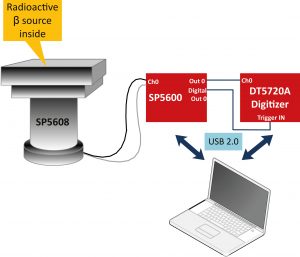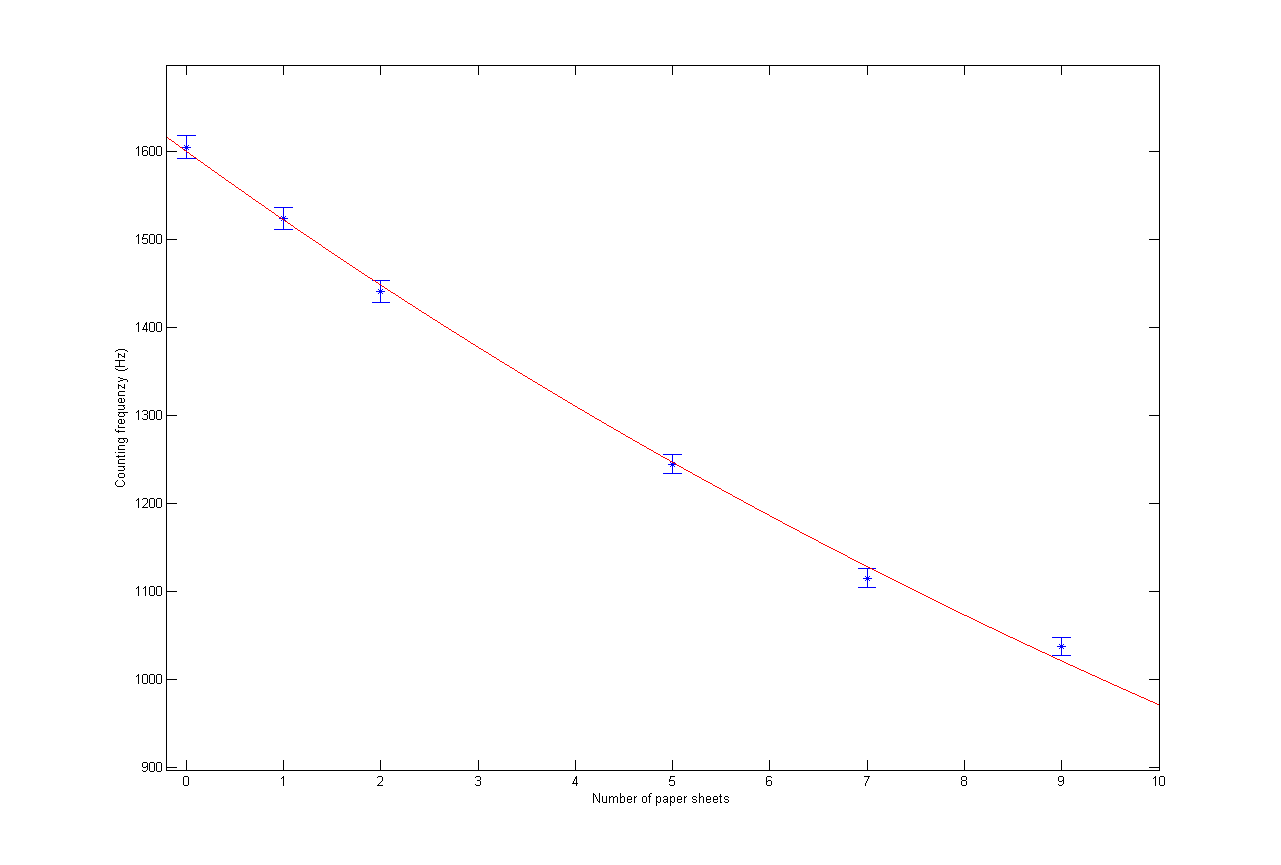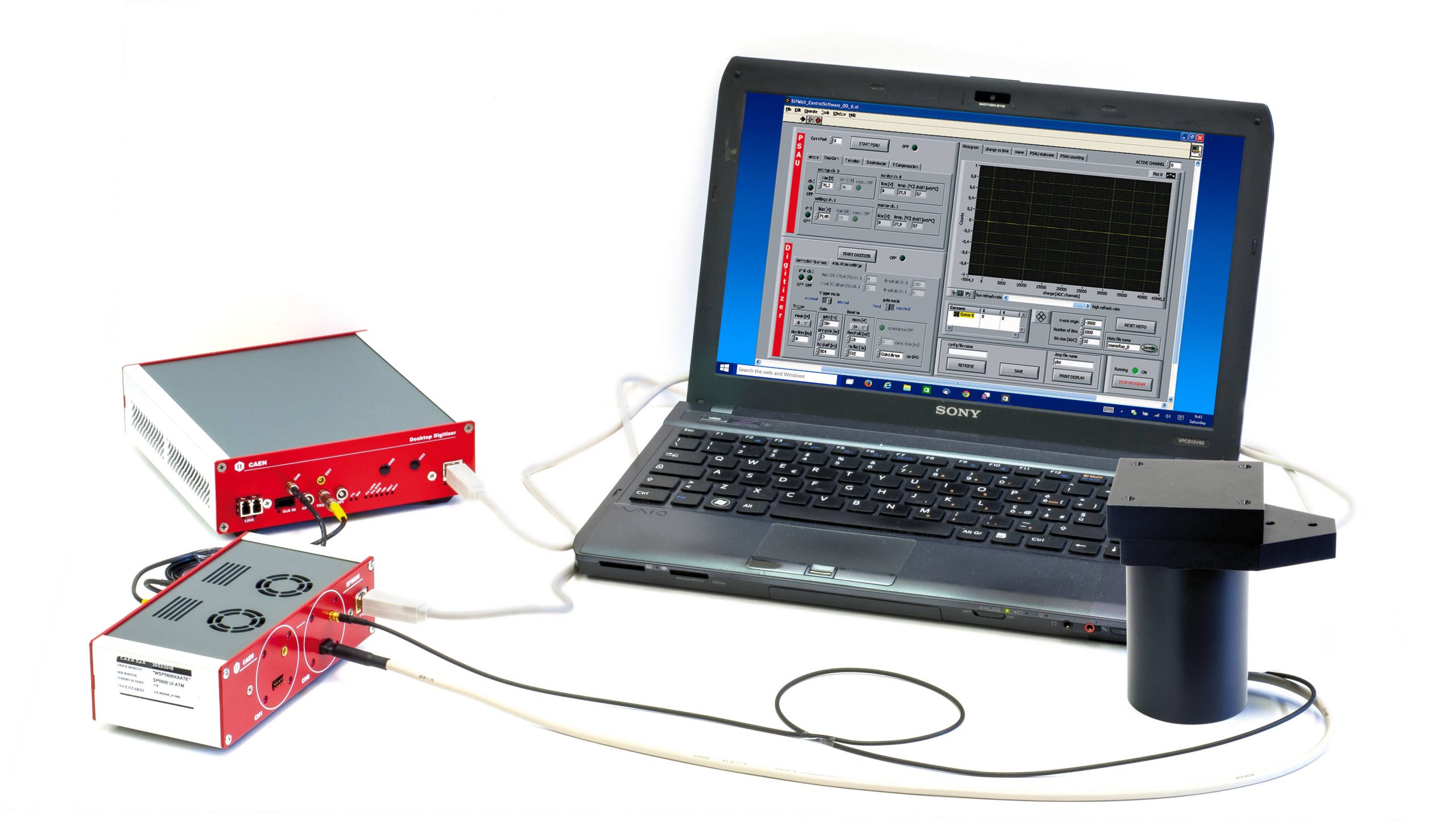| Difficult | Execution Time | Data Analysis | Radioactive Sources |
|---|---|---|---|
| No | Yes |
Equipment
SP5600D/AN – Educational Beta Kit
Beta Radioactive Source ![]()
Purpose of the experiment
Attenuation measurement of the intensity of β radioactive source as a function of the absorber thickness by using two absorber materials: aluminium and paper sheets. Fundamentals β-particle is a charged particle that interacts with matter in several ways depending on its initial energy: ionization process, Bremsstrahlung process, Cherenkov and Transition radiation. When β-radiation crosses a matter thickness, it releases completely or part of its energy due to collisions with absorber atoms; this phenomenon depends on the initial β-energy and on the crossed material density. Beta particles are less massive than alpha particles and only carry a charge of 1e; consequently, beta particles can appreciably penetrate many potential shielding materials although their penetrating capacity is considerably lower compared with γ-rays. These different radiation behaviours are essential for those attempting to shield locations from gamma radiation, either for sensitive experiments or for the safety of humans. The transmission of beta particles is frequently calculated in the same fashion as that of gamma rays, where the mass attenuation coefficient is defined by the slope of the exponential function. Due to the fact that the β-particles with lower energies are less penetrating hence they are completely absorbed at smaller values of thickness, the initial decrease of the absorption curve is too rapid to be fit by exponential function. This approximation is verified only in a particular region of the transmission curve: a minimal absorber thickness so that the beta counting are very well separated from the “background level”.
Carrying out the experiment
Insert the beta source support in the SP5608 and connect power and MCX cables to one channel of the SP5600. Connect the two channel outputs to DT5720A: the analog output to the channel 0 and the digital output to “trigger IN“ of the digitizer. Use the default software values or optimize the parameters to evaluate the contribution not coming from the beta source and choose the discrimination threshold in mV. After that, switch off the power supply, open the SP5608 top and place the beta source on the plastic support and close the support top. Switch ON the power supply and measure the counting rate. Repeat the measurement by adding layers of the same absorber and later change the absorber type.

Experimental setup block diagram
Results
By using different absorber thicknesses, the near-exponential decreasing of β-radiation intensity I as a function of the absorber thickness x, is verified. This behaviour does not have a fundamental basis like gamma rays attenuation, but it is very well described by:
I = I0 * e-nx
where n is the absorption coefficient. This coefficient correlates the endpoint energy of beta source for a particular absorbing material. From absorption curves of beta particles , the absorption coefficients and ranges of β particles in aluminium and in paper sheets can be determined.

Essential behaviour of the transmitted counting rate of Sr90 source with respect to number of paper sheets.

Behaviour of the transmitted counting rate of Sr90 source as a function of different absorbing materials


